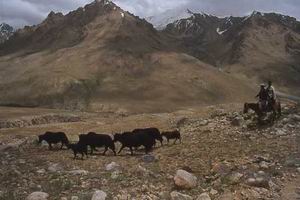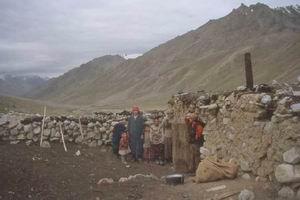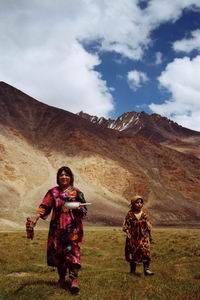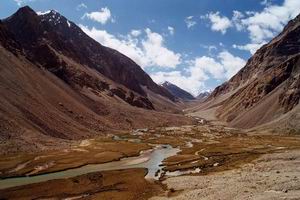 |
||||||||||
| Home | Photo | Gallery | Video | Info | ||||||
| |||||||
|
|||||||
|
Yashilkul lake. There was a new (means not marked in our 30 years old military map) jeep road around the lake, ending at the opposite end of the lake (but no road further). |
A bath house with a hot spring on the jeep road. |
|
Hot bath |
Some stone |
|
Crossing the river coming from the opposite end of the lake by self-service hanging cableway. |
Pamiri shepherd and his son |
|
Another shepherd at the cableway |
Going up the pass on the way from Yashilkul lake to Sarez lake. |
|
Local flora |
Local flora |
|
Local flora and fauna. |
Local flora and fauna.
|
|
Yaks - but cows and sheep are more frequent here. |
Stone/clay summer huts called "letniks". Shepherds stay there during summer with they herds. |
|
One can see several "letniks" along the way. People are extremely hospitable there, always inviting infrequent trekkers for their milk products. |
Home production of butter. Milk products are usually the only diet of these people. They have bread if they manage to exchange cattle for flour only and that is not so easy. |
|
Another "letnik" |
Another yak |
|
On the way |
On the way |
|
Camel in the mountains. I don't know why it was there, it was quite strange in this area, I would expect camels more to the south in Vakhan corridor and Afghanistan. |
People bringing us some milk right after they had seen us. Typical picture of local hospitality. |
|
On the way |
On the way |
|
On the way |
On the way |
|
On the way. Horns from rare mountain goat can be seen on the stones. Western hunters pay 20 000 USD to kill this endangered animal. |
Meteorological station near Sarez lake. No better road leads there than the path we came by. Times when helicopter used to supply it are the past now. |
| ||||||||
|
|
|||||||
| ||||||||


























